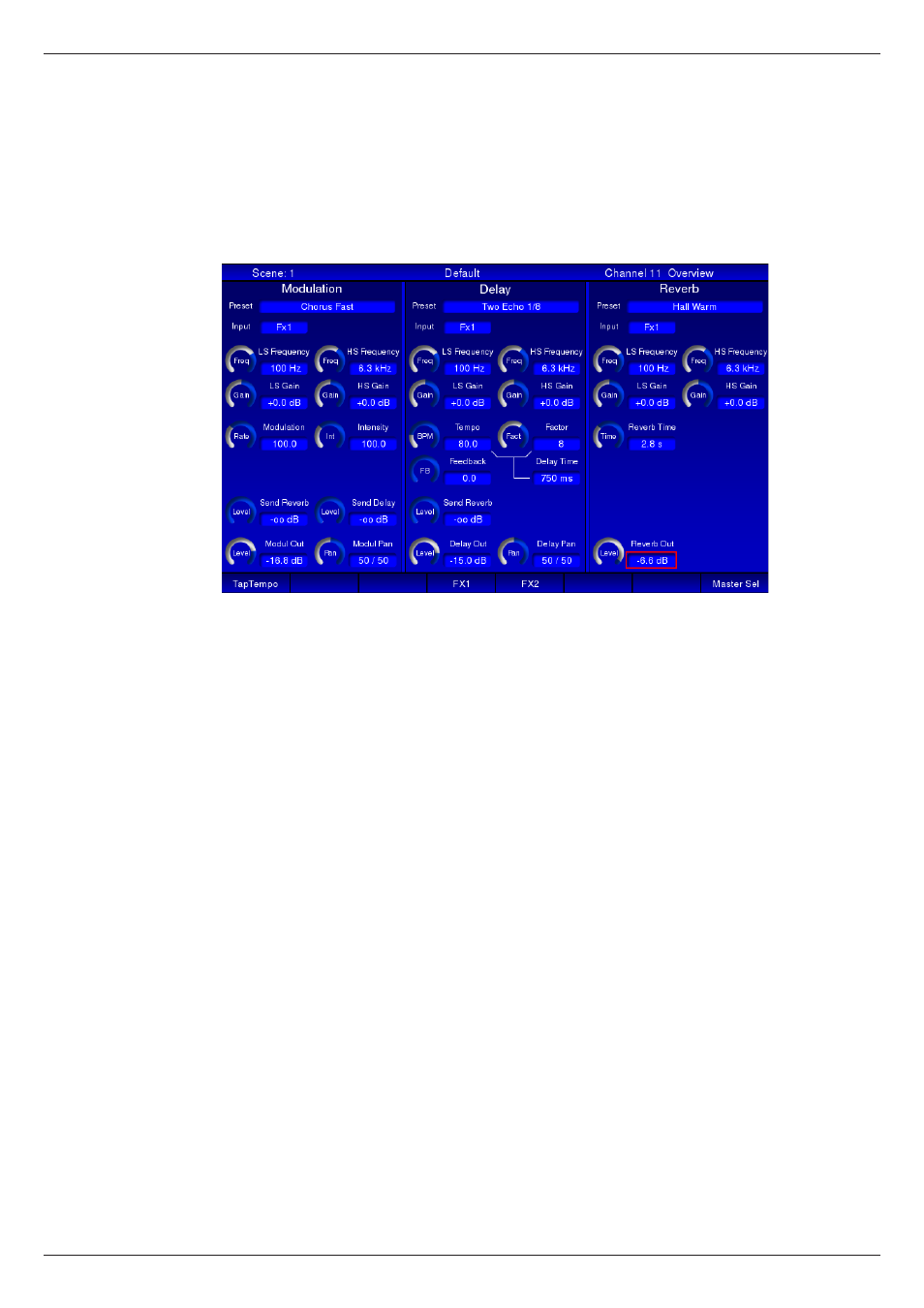Fx processing – Cadac CDC four User Manual
Page 58

58
Revision 1 2012-13
CDC FOUR
FX processing
The FX button opens the FX Settings page; the two internal DSP effects processors
are controlled from here. The two processors each have their own (identical)
control page; Softkeys 4 and 5 select that for FX1 and FX2 respectively. The
controls on these pages have no hardware equivalents, and are selected and are
adjusted by using the cursor keys and the ADJUST control.
Each FX processor comprises three separate FX “modules”: Reverb, Delay and
Modulation.
The default input signal to each FX module is the signal being sent to the FX1 (or
FX2) buss. This is indicated by the Input buttons, which may alternatively be set
to Off to disable the effect of that module, or to the other FX buss, or to any of
the eight Aux busses. The three modules are effectively “in parallel”, and may be
used individually, or in combination. Alternatively, the modules may be connected
“in series” using the Send controls in the Modulation and Delay modules. Thus,
the Modulation module may feed either the Delay or Reverb modules, with the
Reverb or Delay module remaining free to be used with another source; or all
three modules may be cascaded.
The outputs of the two FX processors can be added to the Stereo Master mix, or
to any of the four Groups, by using faders 13 and 14 in the Outputs layer. See
“FX sends and returns” on page 49 for full information on the audio path of the
FX channels.
Module 1 - Modulation
The Modulation module may be used to generate a range of time-variant “phasing”
effects of various kinds. 8 standard modulation presets are provided, which may
be selected with the Preset control. These are:
Chorus Slow
Chorus Fast
Flanger Slow
Flanger Fast
Celeste Slow
Celeste Fast
Rotor Slow
